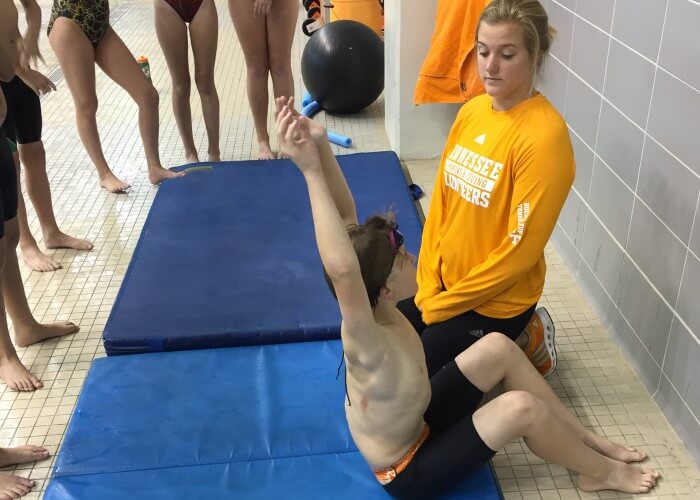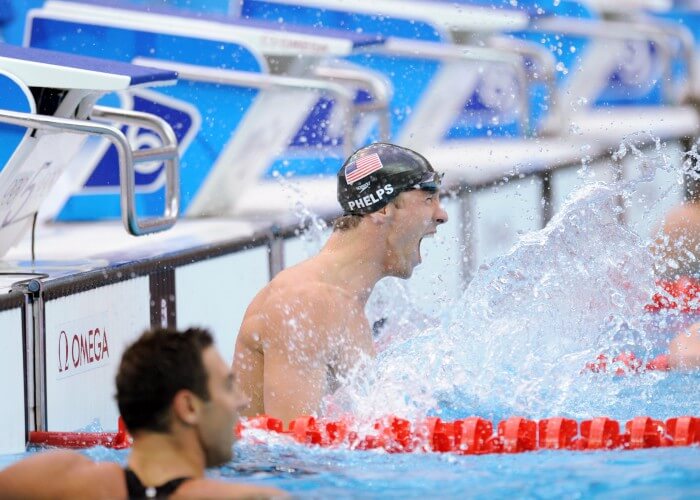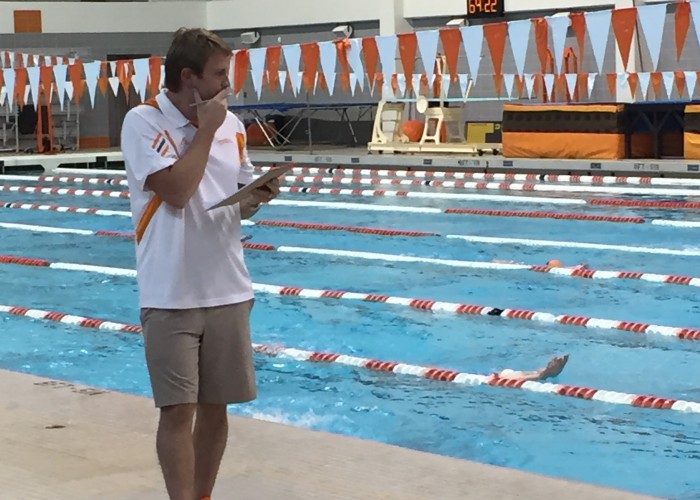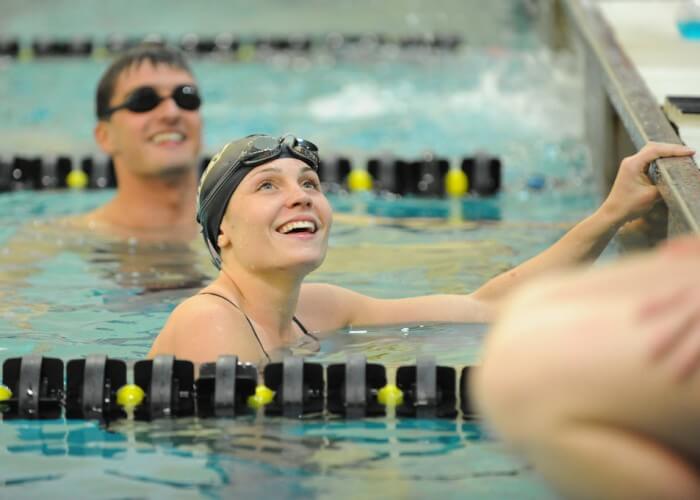What Keeps Great Coaches from Becoming Complacent? A Lot.
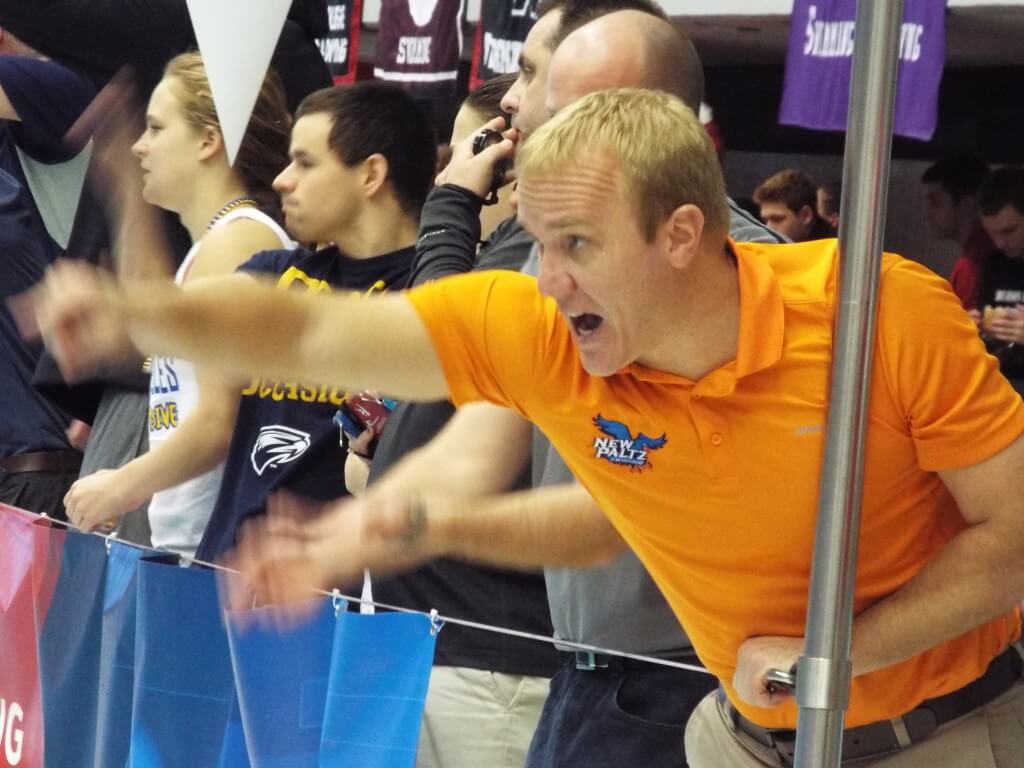
By Eric Bugby, Swimming World Contributor
The Coach
We’ve all seen a lazy coach; reading USA Today, drinking a double tall soy latte, playing Bounce on an iPhone.
And all during warmup.
The swimmers drudgingly stroke back and forth. No feedback. No interruptions. No coaching. Then a sound is heard. It starts low, tired, barely making it’s way through blue lips. Then the sound grows louder, energized, happening faster than the early morning chill of water up your spine. All of the swimmers are finished with warmup and are engaged in conversation. Probably talking about how enjoyably awful Jurassic World was, either way, this sound signals the coach to get up and write the first set on the board.
How dare they.
That’s one example of a million coaching iterations. “Coaching” used loosely in that example. In the end, every swimmer and coach has a common goal: best times. Best times are not always spoken. They can be coated in other goals, such as swimming the right race, or winning a summer league meet, or making the Olympic team.
There is no set philosophy or prescription to swimming fast. There are basic generalities all coaches agree upon, but each coach is very different in their approach.
The Five
There are five philosophies coaches use to induce a best time. Each tier requires more work and focus for the coach. It also requires more work and focus for the swimmer. As swimming has advanced over time (video feedback, lactate testing, periodization, exercise physiology, technique, not to mention the sheer size and strength of current Olympians), coaching has advanced to match the demands of the sport.
Turns, starts, underwaters.
Drag, force, buoyancy.
All are now factors in achieving a best time. Even if a best time is by .01, it’s worth it. Nathan Adrian over James Magnussen by .01 in the 100 freestyle at the 2012 London Olympics. Michael Phelps over Milorad Čavić in the famous 100 butterfly at the 2008 Beijing Olympics.
All worth it and all achieved by one of the five following philosophies:
1. Toughness. A best time is achieved by putting in the work, quantity or quality, and then adding rest. Timed 3,000s, check. 10×400 IMs, check. The whole practice at max effort, check.
2. Training. A best time is achieved through periodization, or a season plan. This may include periods of high yardage aerobic work and periods of low yardage anaerobic work. Mix it altogether with the right amount of rest, voila!
3. Technique. A best time is achieved through teaching, posture, drills, etc. The best swimmers in the world know how to minimize drag. Mimic what they are doing.
4. Tact. A best time is achieved by combining “Technique” with either “Toughness” or “Training.”
5. Totality. A best time is achieved by combining of all of the above, knowing when to work and when to rest, and motivating yourself and your swimmers.
The Time
I recently sat down with Bret Lundgaard, assistant coach at the University of Tennessee (UT), to discuss coaching. Bret swam at the University of Washington and started his coaching career in Nevada at Boulder City High School and with Desert Storm Swim Team. He went on to coach at the United States Military Academy as the lead distance coach and recruiting coordinator.
Now, Bret wear many hats with UT. His title of assistant coach encompasses the roles of lead short-axis coach, recruiting coordinator, and assistant camp director.
I described the five philosophies of coaching to Bret and asked him how much time UT spends on just coaching.
“A lot.”
Short, but powerful. I would argue most coaches would answer that question by adding up the time spent writing a workout with the time spent on deck. That’s not the case here.
We spent the next thirty minutes unraveling what “a lot” actually means and I pinpointed seven specific activities that go into coaching for Bret:
1. Meetings. UT’s Monday staff meeting lasts anywhere from four to six hours. They talk about the team, their needs, and how to get better. “We literally discuss each person. Sometimes it’s team first, then gender, then group, then the individual,” said Bret.
2. Video. Throughout the week, the UT staff will bring in swimmers for video work. Each coach will annotate the videos, slow down specific moments, overlap with other videos if needed, and send to each swimmer. Bret sent me six videos he made of Brad Craig. Brad is currently ranked eighth in the country for the 100 meter breaststroke. Each video contains one to three minutes of detailed explanation and tips on how to improve.
3. Periodization. Each year starts with a plan, which covers competitions, periods of work and rest, training goals, desired adaptations, etc. “The kids will evolve a lot,” said Bret. “We will evaluate each week and deviate if necessary: less volume, more volume, less rest, more rest.”
4. Technique. Technique is everything. A better shape has less drag. Less drag results in more speed. More speed, with the right work, can transform a swimmer. I was fortunate to observe a few UT practices and saw an energetic and engaged group of coaches. While coffee was a must, there wasn’t time for a light read or even time to look at your phone. The coaches were teaching from the outset of practice, correcting and adjusting, working on posture, shapes, drag, timing, anchors, and the list goes on.
5. Testing. Not just recording test sets or assessing dual meets, but UT will “test the lactate levels in the blood all the time,” explained Bret. “It’s instant feedback and some test 20 times each practice.”
6. Writing. “This year I’ve put the most time into writing workouts.” Enough said.
The Pause
The seventh coaching technique and the one that stunned me the most, as well as Bret as he said it out loud, was the time he spends “dreaming” about swimming.
“Dreaming” is the term Bret got from Bill Boomer. Boomer is a volunteer coach with UT and a swimming legend. From coaching Josh Davis and Dara Torres to reimagining a swimmer’s aquatic signature, Boomer’s “dreaming” is not only accurate, it’s probably understated. He did it for two hours a day.
Bret describes “dreaming” as a “pause.” Instead of worrying about emails, recruiting, camp, or anything on his to-do list, Bret takes a “pause” and thinks about swimming.
“I go through what I’ve seen, process it, and just think,” said Bret. “I’ll spend 30 minutes to a full hour. That’s when I become a better coach.”
The Result
Again, there isn’t one set philosophy or prescription to swimming fast. Every swimmer is different and every swimmer has different needs. But it’s the coach’s job to take the time and figure out what’s best for their team and their swimmers. What UT does isn’t the formula for each college team or club team or summer league team. It’s what they figured out is best for their own team and are willing to keep learning, adapting, and improving.




